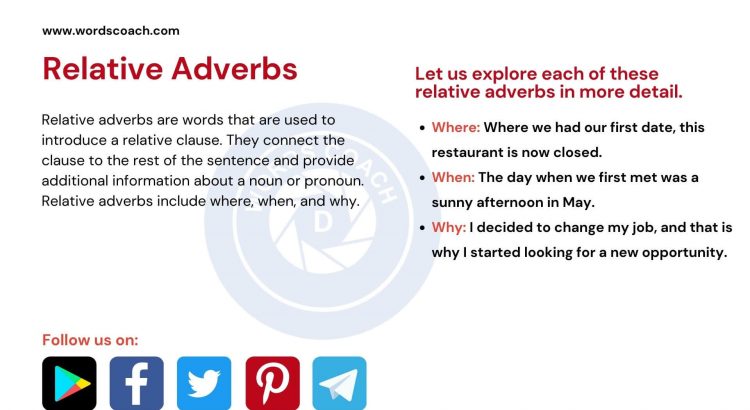Relative Adverbs
Relative adverbs are an important part of the English language. They are words that are used to introduce a relative clause, which is a dependent clause that provides additional information about a noun or pronoun. Relative adverbs are used to connect the clause to the rest of the sentence and provide context and detail. In this blog, we will explore what relative adverbs are, how they are used in English, and some common examples.
Relative adverbs are words that are used to introduce a relative clause. They connect the clause to the rest of the sentence and provide additional information about a noun or pronoun. Relative adverbs include where, when, and why. Let us explore each of these relative adverbs in more detail.
- Where:
Where is used to introduce a relative clause that provides information about a place.
For example, “This is the restaurant where we had our first date.” - When:
When is used to introduce a relative clause that provides information about a time.
For example, “That was the day when we first met.” - Why:
Why is used to introduce a relative clause that provides information about a reason.
For example, “That is the reason why I decided to change my job.”
Relative adverbs can also be used in a sentence in different positions. They can be used at the beginning, in the middle, or at the end of a sentence.
For example:
- Where: Where we had our first date, this restaurant is now closed.
- When: The day when we first met was a sunny afternoon in May.
- Why: I decided to change my job, and that is why I started looking for a new opportunity.
Relative adverbs are important in the English language because they help us provide additional information about a noun or pronoun. By using relative adverbs, we can communicate more effectively and add detail to our sentences.

